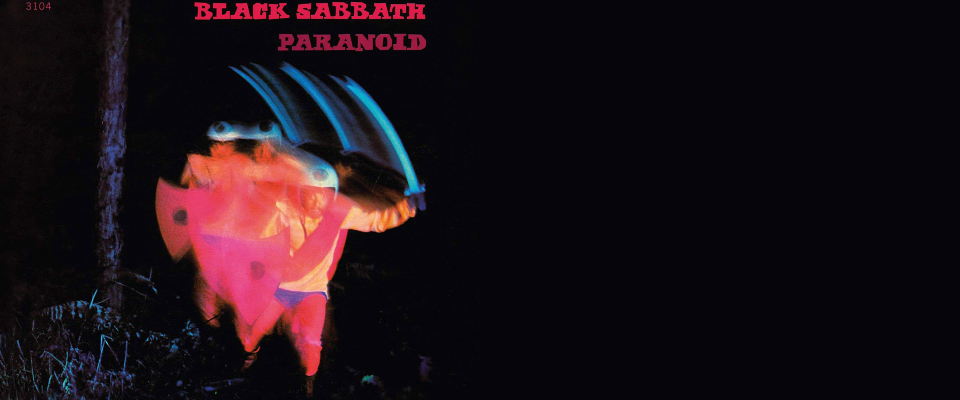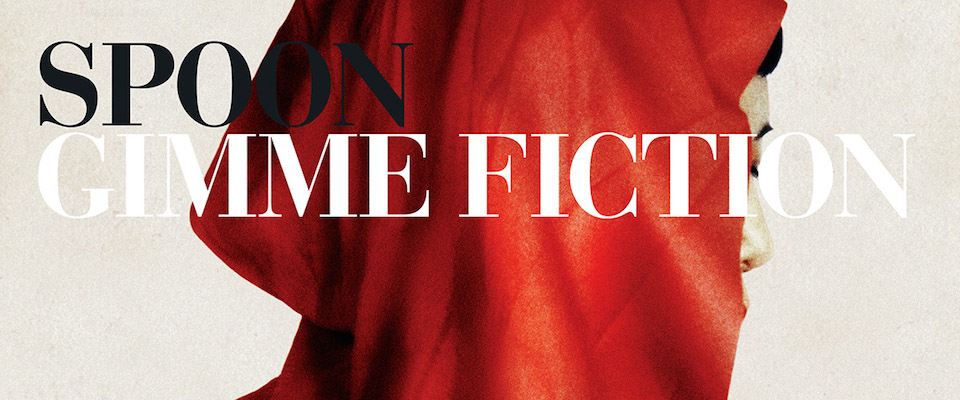Disclaimer: This article contains images and descriptions of violence that some may find upsetting.
Reader discretion advised.
On July 9th, 1991, Houston hip-hop group Geto Boys released their third album,We Can’t Be Stopped, through hometown label Rap-A-Lot Records. These days the album is mainly remembered for its infamous album cover and breakout single, “Mind Playing Tricks On Me”. But a listen back thirty years after its release gives us the hindsight to recognize We Can’t Be Stopped as the defining Geto Boys record and a major milestone in the evolution of Southern hip-hop.
by Jack Anderson
Making Trouble: Birth of the Geto
The Ghetto Boys (as they were then known) first popped up in Houston’s Fifth Ward community in 1986 but before the year was out, they lost two of their three founding members. Raheem and Sir Rap-A-Lot ditched the picture just as quickly as they’d arrived, leaving the sole survivor, The Sire Jukebox, to rebuild Ghetto Boys with DJ Ready Red, Prince Johnny C, and eccentric dancer/hype man Little Billy. Ghetto Boys followed up their debut single “Car Freak” with the 1987 “You Ain’t Nothin’/I Run This” and “Be Down” the following year, culminating in the release of their debut album Making Trouble on February 17th, 1988. Recorded on the heels of the triple-platinum success of Run D.M.C.’s Raising Hell, Making Trouble pastiched Run-D.M.C.’s mid-decade style, emulating their beats, rapid trade-off rhyme style, shouted vocal deliveries, and even their outfits. Check it out below and judge for yourself.

Yet D.M.C.’s follow-up album, Tougher Than Leather (released mid-May of ’88) marked a significant departure from their style by emphasizing sample-heavy beats and more nuanced deliveries, becoming Platinum-certified by July. The Geto Boys’ Making Trouble, released a mere two months before Tougher Than Leather, received negative reviews and failed to gain any significant traction. In the wake of the critical and commercial disappointment, Rap-A-Lot Records CEO J. Prince (who’d launched the label with “Car Freak” and invested his full budget in the group) noted the derivative nature of Sire Jukebox and Prince Johnny C and dropped them from the group to pursue a new direction. DJ Ready Red and Little Billy (who’d transitioned into a full-time lyricist under the stage name Bushwick Bill) remained. J. Prince asked already-signed solo act Willie D. to join the Ghetto Boys as a favor, and the rapper accepted, albeit reluctantly. Insisting on the strength of a four-piece, Prince then had to choose between two candidates: his own brother, or a notorious Houston wordsmith known as “Akshen“. Prince set up DJ Ready Red’s house as an audition space and invited the two contenders to compete over Red’s instrumentals. Prince was struck by Akshen’s stern delivery and far-from-playful lyrics, both of which steered from the norm of hip-hop in the late ’80s, and recruited Akshen as the final member of Ghetto Boys’ new lineup.
Getting to That Other Level
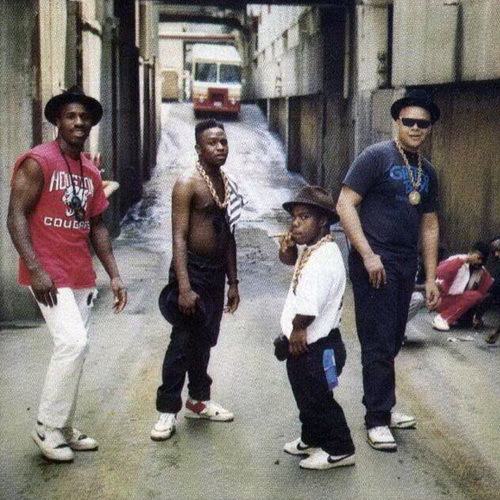
1988 was a pivotal year for hip-hop. Some of the biggest records were Public Enemy’s It Takes a Nation of Millions to Hold Us Back, Slick Rick’s The Great Adventures, N.W.A.’s Straight Outta Compton, Eric B. & Rakim’s Follow the Leader, Big Daddy Kane’s Long Live the Kane, and the aforementioned Tougher Than Leather from Run-D.M.C.. Each album challenged the way producers thought about flipping samples just as much as they drew the line between acceptable controversy and tastelessness. In other words, it was the perfect time for Ghetto Boys to take a hard left rather than chase a stagnant fad.
Whatever path Ghetto Boys took, J. Prince was going for broke, literally. Unbeknownst to the Boys, Prince was weighing the future of Rap-A-Lot Records on the outcome of Ghetto Boys’ next release, and had resolved to shut down Rap-A-Lot and leave the music biz for good if it didn’t do well. Sessions for the new album began in late ’88 and by Spring of ’89 Grip It! On That Other Level was ready to ship.
Grip It! On That Other Level far surpassed the lackluster reception to Makin’ Trouble, reaching 166 on the Billboard’s Top 200 and coming in at #19 on the R&B/Hip-Hop chart. Through its versatile sample selection, inter-bar chemistry, and brutally gratuitous lyrics, Grip It! On That Other Level exposed hip-hop listeners to what Texas (A.K.A. the “Third Coast“) had to offer. The East Coast/West Coast rivalry was unheard of at the time, and overall the hip-hop community was more inviting when it came to Ghetto Boys’ idiosyncratic, southern style. In particular, the rappers’ regional drawl and penchant for nightmarish depictions of violence drew plenty of attention to the group.
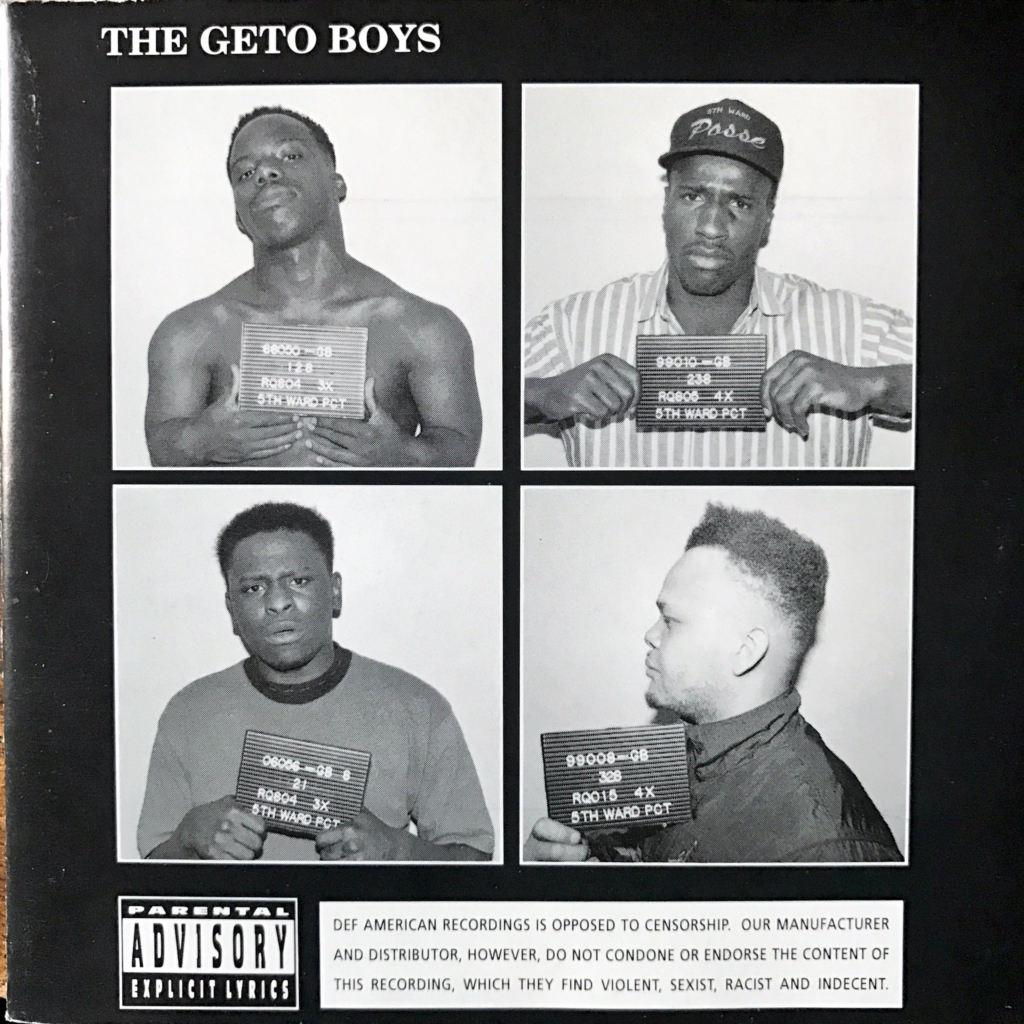
By the turn of the decade, Ghetto Boys and Rap-A-Lot Records were finally making a return on J. Prince’s investment. Reputation and capital in hand, J. Prince enlisted Def Jam Records co-founder Rick Rubin to remix Grip It! On That Other Level and re-release it for the masses on CD. Imagine the sense of accomplishment Prince must’ve felt; fool-hearted first iteration of Ghetto Boys had tried to beat Run-D.M.C. at their own game, and now, just a couple years down the road, the group was working with their co-producer. Rubin put his renowned skills to work, re-recording ten of Grip It!‘s songs, “Assassins” off of Makin’ Trouble, and two new originals, “Fuck ‘Em” and “City Under Siege” (serving as the record opener and closer, respectively). The resulting compilation was completed and released in 1990 as The Geto Boys. It marked the first appearance of the group’s signature misspelling and seemed to market itself as the true debut for the Geto Boys. Def Jam subsidiary Def American Recordings took extra care in presenting the sensitive content by packaging The Geto Boys with a one-of-a-kind warning label: “Def American Recordings is opposed to censorship. Our manufacturer and distributor, however, do no condone or endorse the content of this recording, which they find violent, sexist, racist and indecent.” A message like that plastered right on the cover might’ve scared off most, but for The Geto Boys, that was exactly the kind of notoriety they craved. Yet by setting the bar for shock value so high, The Geto Boys might have been setting themselves on a path towards self-destruction.
We Can’t Be Stopped
“If you look at my face on the We Can’t Be Stopped album cover you can tell I didn’t want to be a part of that photoshoot. Bill was still in the hospital. He was highly sedated, man. We took that picture at the actual hospital where Bill was at. And Chief, who was our manager at the time, said, ‘Bill, take the eye patch down.’ And I was like, ‘Awww fuck! Man, this is some bullshit.’ I strongly believe that what goes on in this house stays in this house. I didn’t really want to put Bill out there like that. How many people have gotten their eye shot out and captured it on an album cover for everyone to remember? It’s hard to wake up in the morning and deal with that one.” – Scarface (Vibe.com)
“It still hurts me to look at that cover because that was a personal thing I went through… I still feel the pain from the fact I’ve got a bullet in my brain… I think it was pretty wrong to do it, even though I went along with the program at first.” – Bushwick Bill
In the immediate aftermath of The Geto Boys, the group underwent some clear changes. Rapper “Akshen” had time and again drawn parallels between the fictional rise of Tony Montana and his own life, and officially adopted a new handle, Scarface. And in the midst of recording their next LP, founding member DJ Ready Red left the group, citing personal reasons. Sure, times were tumultuous, but the Boys had been through worse, right?
Bushwick Bill candidly recounts the 1991 shooting incident on San Francisco’s KUSF radio.
Cut to the early hours of Juneteenth, 1991. After a day-long bender of drinking grain alcohol and using various drugs, Bushwick Bill returned home inebriated, erratic, and outwardly depressed. He retrieved a pistol, woke up his then-girlfriend, and demanded she kill him. When she refused, Bushwick fired at her and their three-month old child, then attempted to assault the former with a vacuum cleaner head but missed. In the chaos, Bill forfeited the pistol to his girlfriend, then advanced towards her when the barrel was facing him, fumbling for the trigger. Two pairs of hands scrambled for control of the gun. The struggle abruptly ended when a round was fired point blank into Bushwick Bill’s right eye socket.
When the news hit Geto Boys’ management team, they smelled an opportunity. In a matter of days, Scarface and Willie D were called to the hospital treating Bill for a disturbing project: capturing the tragedy on camera and using it for their recently completed album’s artwork. Bill was wheeled out of his room on a gurney, and later, a wood-backed wheelchair, while Geto Boys manager “Chief” snapped photos. At one point Chief insisted Bill lower his eyepatch to expose the physical trauma.

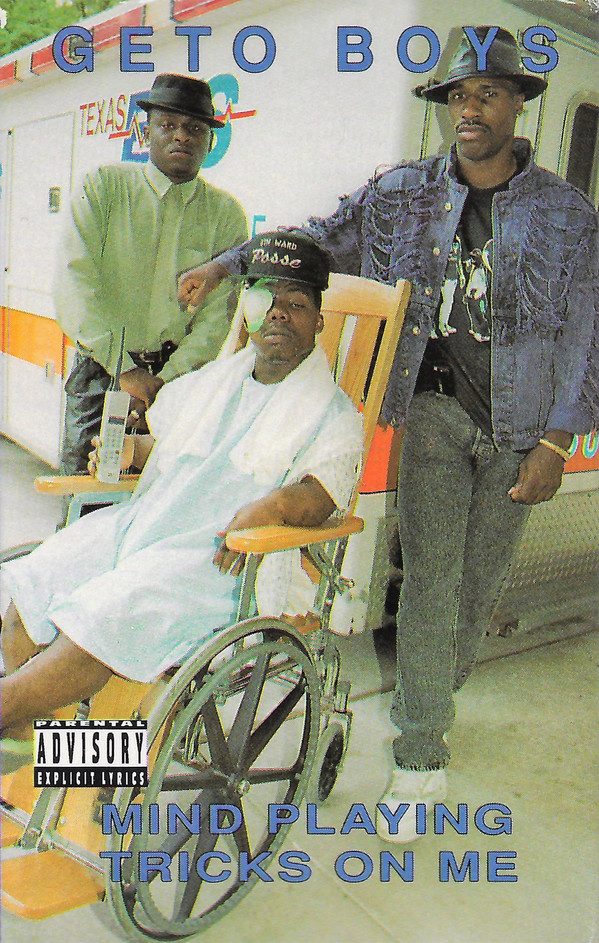
It’s an indescribably bizarre pair of images. Where previous press photos depicted Geto Boys posing as “hard”, or “toughened by the streets”, these images saw Willie D sullen with grief, Scarface agitated and unamused, and Bushwick Bill sedated into near-dissociation. Bill’s hospital gown is oddly contrasted with a bulky cell phone and a cap repping 5th Ward Posse. Willie D sports a vibrant, frayed jean jacket over a T-shirt while Scarface’s outfit seems more akin to Southern church attire. Their stark expressions suggest nothing close to being “badass”, further lending to the tense reality of an already bleak snapshot.
The high-profile incident built anticipation for the upcoming record and within weeks Geto Boys’ collective discomfort became immortalized on the cover of We Can’t Be Stopped. The title was originally a response to Geffen Records ending their distribution deal with Def American after The Geto Boys but could be interpreted more literally when paired with the image of Bushwick Bill essentially clinging to life. We Can’t Be Stopped dropped on July 9th, 1991, packing nine solo tracks (three per member) and three full-group arrangements. The album’s grisly lyrics did little to subdue the notion of danger implied on the cover photo, and sold well in the early days of the Parental Advisory label. Its emphasis on andante tempo, soul-funk samples, and dry, abrasive snares meshed well with the mainstream progression of hip-hop, and by early 1992, We Can’t Be Stopped reached Platinum.
“Mind Playing Tricks On Me”
“I think my manic depressive state and suicidal tendencies played a huge role on who I was back then. “Mind Playing Tricks On Me” was one of the numerous songs I wrote and produced myself. There were three verses: my first two verses—the verse that Bill rapped was my own third verse. It was a record I originally recorded for my solo album, but nobody wanted that song. I swear…nobody. Willie D. didn’t think the record would work, but he wrote a verse to it anyway after J had done his research on this song. He found some people who were really feeling it. He wanted everybody to rap on it. It became a Geto Boys record.” – Scarface (Vibe.com)
Music Journalist Brian Coleman does an outstanding job of breaking down We Can’t Be Stopped in his collection Check the Technique, so instead of a track-by-track analysis, let’s just tackle the album’s most-lauded original, “Mind Playing Tricks On Me“. Self-produced by Scarface (who wrote three of the four verses) and originally intended for his debut solo LP Mr. Scarface Is Back (released on October 8th, 1991), the beat follows the fairly common formula of slowing (or “screwing”) and looping a vintage instrumental refrain, in this case Isaac Hayes‘ 1974 track “Hung Up On My Baby”.
Between the raw vinyl scratches in the sample and Scarface’s deadpan scene-setter, “I sit alone in my four-cornered room staring at candles…”, there’s so much sinister weight in those first four seconds. Everything coalesces at the top of the first verse, when the screwed breakbeat from Graham Central Station‘s 1975 original “The Jam” complements a simple, monotone subwoofer-lovin’ 808 boom bass line.
All these small pieces put together make for a brilliantly hypnotic groove, allowing us to be fully mesmerized by the sequence of unreliable narrators, all coping with their own self-destructive urges and urban hallucinations. It’s a phenomenal example of how horrorcore hip-hop can actually sound pretty smooth, given the contrast between the soulful beat and morose lyrics. The technique of stating the song’s title in a verse’s final line before an instrumental-only chorus had already been implemented elsewhere in hip-hop, particularly with Eric B. & Rakim and N.W.A., but I’d argue that its use in “Mind Playing Tricks On Me” is the finest of the genre.
Geto Legacies
We Can’t Be Stopped has since been heralded as a landmark album for Southern rap, pioneering a sound later elaborated on by acts like Outkast, UGK, Fat Pat, and Goodie Mob. With Houston as a focal point, We Can’t Be Stopped secured the South as a hub in the hip-hop world, thereby paving the way for H-Town’s early-mid-’00s resurgence with Chamillionaire, Mike Jones, Paul Wall, Slim Thug, Lil Keke and others. It made Houston a household name all the way to New York, having clearly caught the ear of The Notorious B.I.G., as heard in the lines, “I’m not from Houston but I Rap-A-Lot” (from the remix of Craig Mack’s “Flava in Ya Ear”) and a more direct reference in “One More Chance”‘s verse two opener, “Is my mind playing tricks/like Scarface and Bushwick, Willie D/having nightmares of girls killing me”.
Willie D left the group shortly after We Can’t Be Stopped came out, not to return until 1996’s The Resurrection, thereby making it the final appearance of Geto Boys’ “true” lineup for many. As with many other records to receive a Parental Advisory sticker in the early ’90s, We Can’t Be Stopped came under fire from prominent American politicians wanting to scapegoat “gangsta rap” for other underlying moral insecurities. In terms of its album artwork, one could equivocate We Can’t Be Stopped as a tasteless attempt to cash in on a disturbing image, comparable to Mayhem’s (discretion advised) The Dawn of the Black Hearts. I’ve always thought that the gritty-but-cinematic vibe seen on Mr. Scarface Is Back is what Geto Boys’ management intended to portray, but there’s no denying the instant impact of We Can’t Be Stopped‘s chilling realism. That picture is truly worth a thousand words.
“Mind Playing Tricks On Me” and We Can’t Be Stopped put Geto Boys on the fast track to superstardom, a period of success that ebbed in the mid-’90s then flowed once again with the prominent inclusion of ’92’s “Damn it Feels Good to Be a Gangsta” and ’96’s “Still” in Mike Judge’s 1999 film Office Space. It may seem trivial at first, but the use of a Houston group by Judge (a fellow Texan) to represent rebellion and outrage against polite, milquetoast corporate banality couldn’t have been executed better. And the film’s status as a cult classic catapulted Geto Boys’ music to an even wider audience.
Scarface, Bushwick Bill, and Willie D each thrived with their own solo discography after the success of We Can’t Be Stopped. When the three did collaborate as Geto Boys, reception was positive, as evidenced by 1996’s The Resurrection and Geto Boys’ final album, The Foundation from 2005. The three are frequently cited as pioneers and innovators of the horrorcore hip-hop subgenre, a style that permeates today with the dark, unhinged nature of Southern rap. In a press interview surrounding his 2015 solo album, Deeply Rooted, Scarface stated he would not take part in another Geto Boys album.
Bushwick Bill continued to struggle with health and legal issues, both unrelated to his 1991 injury. A May 2010 possession charge led to a threat of deportation back to his native Jamaica, though his sentencing ended up being much lighter. Oddly enough, Bushwick Bill became somewhat of an Austin urban legend, making his way backstage countless times and it seems like at least half of the music community has a good Bushwick Bill story. When Bill received a stage four pancreatic cancer diagnosis, he announced a farewell tour, one that was cancelled at the last minute. He would pass away at age 52 on June 9th, 2019, nearing the 28th anniversary of his shooting. Less than a year before, in August of 2018, founding member DJ Ready Red passed away from heart complications at age 53.
Though it’s inherently a relic of ’90s, We Can’t Be Stopped walks a tightrope of timelessness, and you can stream the album in its entirety (both the original and DJ Spice’s chopped & screwed version) in the Spotify player below.
–Jack Anderson

